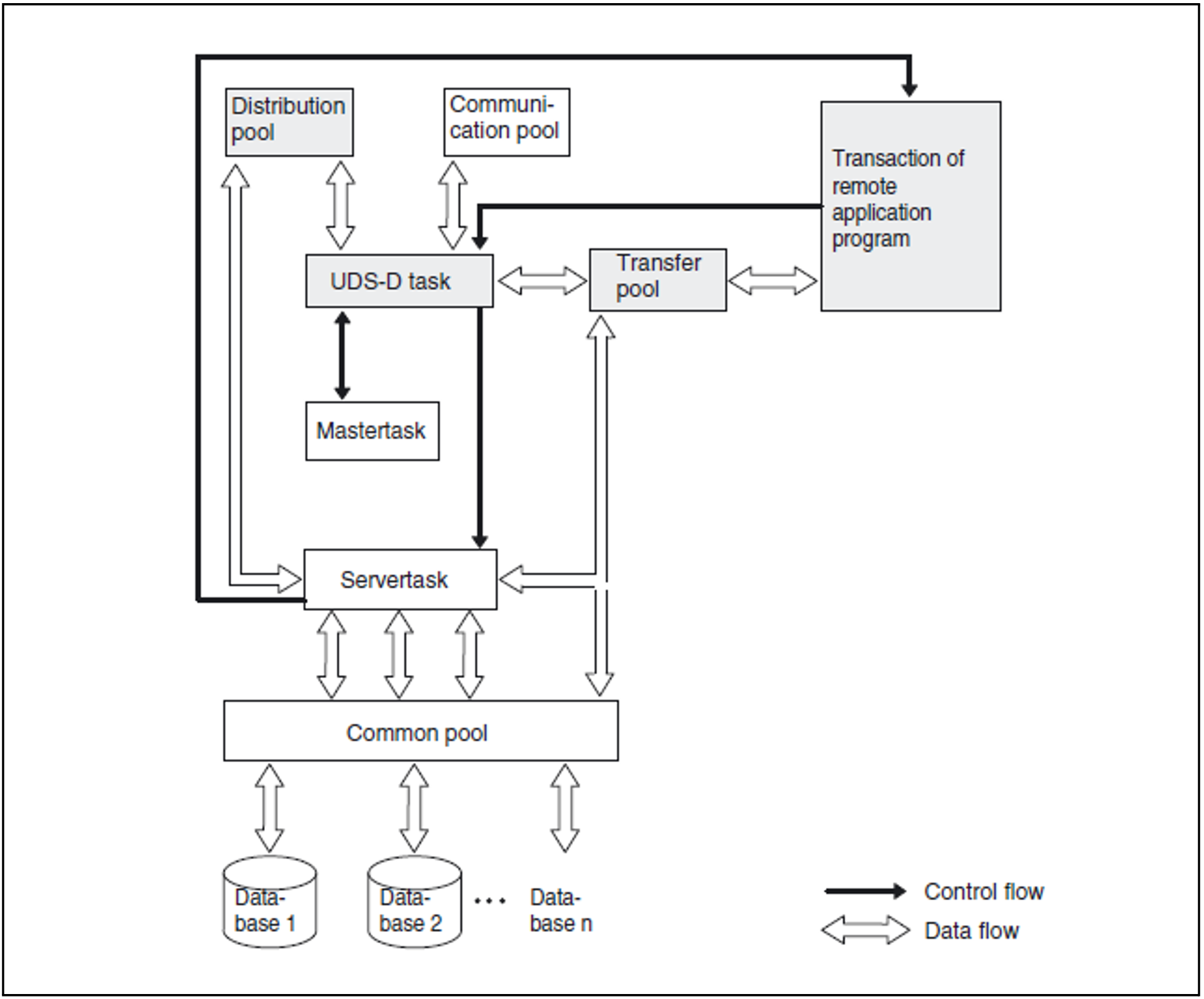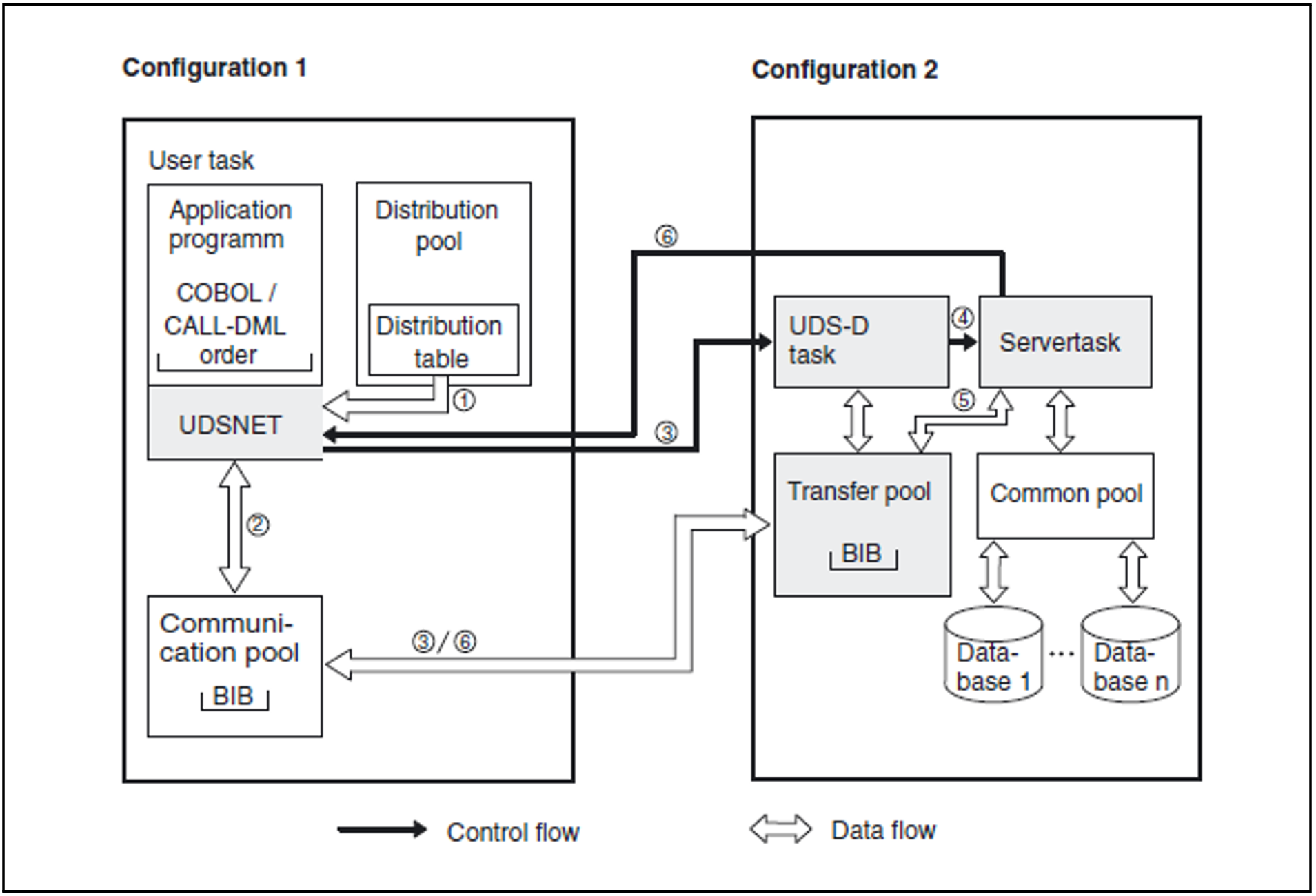Distributed databases can be processed in combination with UDS-D only by the independent DBH.
When UDS-D is used, the independent DBH consists of the following tasks:
the master task
one or more server tasks
the UDS-D task
The master task and the server tasks are described in detail in section “How the independent DBH works”).
The UDS-D task (UDSCT) is loaded by the master task as an ENTER job in accordance with the DBH load parameter PP DISTRIBUTION.
The UDS-D task sets up its own specific tables and memory areas, e.g. the distribution pool with the distribution table and the transfer pool to accept BIBs. It receives DML statements from remote application programs and passes them on to the server task.
The UDS-D task continuously monitors the logical connections to remote application programs (see section “Monitoring the logical connection to remote application programs”).
The transfer pool performs a similar function for DML statements of remote application programs as that of the communication pool for DML statements of local application programs. It contains
the transaction ID
the DML statement with its parameters (BIB)
the data to be transmitted (BIB)
The common pool is a memory area that can be accessed by all DBH requests. It is described in detail in section “How the independent DBH works”.
The distribution pool contains the distribution table and UDS-D-specific system tables.
The distribution table is used by the distribution component in the user task to determine whether the subschema to be processed is local or remote.
The figure 22 illustrates the independent DBH when using UDS-D. It shows the main communication channels that are used when a remote application program communicates with the DBH.
Figure 22: The independent DBH when using UDS-D
Handling of a COBOL DML or CALL DML statement for a remote subschema
The figure 23 shows how a COBOL DML or CALL DML statement of the application program is handled in cases where a remote subschema is to be processed.
Note that if a CALL DML statement is involved, a BIB is created to enable further processing of the request (see “Processing of a CALL DML statement by the independent DBH” in chapter "How the independent DBH works"). This BIB serves as the input for the distribution component UDSNET.
Figure 23: Handling of a COBOL-DML/CALL DML statement that processes a remote subschema
On receiving the appropriate READY statement, the connection module determines the location of the remote configuration via the distribution table.
The BIB that is to process a remote subschema is first transferred by the user task to the communication pool.
The BIB is then sent from the communication pool via the logical connection to the transfer pool. This awakens the remote UDS-D task. The user task itself waits for the arrival of the processed BIB.
The BIB is assigned to a currently available server task for processing.
The server task processes the BIB.
The BIB is then returned from the transfer pool via the logical connection to the communication pool. This terminates the wait state of the user task.


